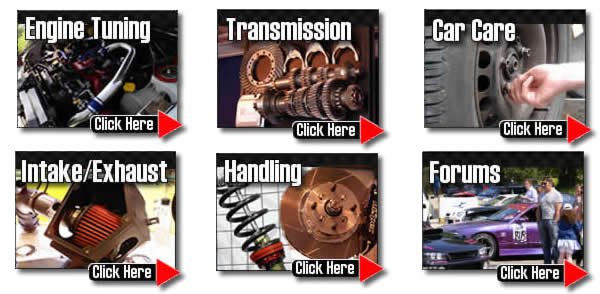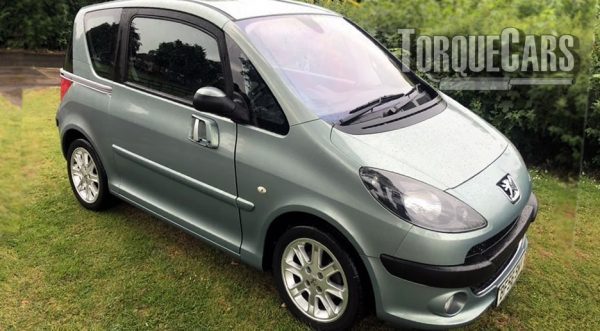Peugeot 1007 Tuning
"Thanks for reading this Peugeot 1007 tuning article."
With it's debut in 2005 and production run until 2009 it was replaced with the 108. The 1007 shared the 206 platform and has much in common with it's brother and the Citroen C3.
It's power sliding doors and unique styling make the 1007 really stand out. It's small size lends itself well to a tuning project because even small power gains make a difference.
The model is a 10 0 7 (ten O seven) and it's kind of cool it shares a number with Bond, and we wonder what gadgets and upgrades he would have.
Your engine choices were
- 1.4 L TU3 I4 1360cc 55 kW; 74 bhp (75 PS) 89 lb·ft; 118 N·m
- 1.6 L TU5 I4 1587cc 81 kW; 108 bhp (110 PS) 110 lb·ft; 147 N·m
Diesel engines
- 1.4 L DV4 HDidiesel I4 1398cc 49 kW; 66 bhp 118 lb·ft; 150 N·m
- 1.6 L DV6 HDidiesel I4 1560cc 82 kW; 109 bhp 194 lb·ft; 260 N·m
The 1007 is a good project car to do. With the right mods your 1007 can be transformed into an awesome motor. Don't waste money, do your homework and follow our unbiased guides to each performance upgrade to avoid disappointment.

Handling/Suspension upgrades
Improving the handling for lots of DIY modders first priority in your 1007 tuning project.
We found that most 1007 factory suspension setups need tweaking, a few degrees of toe out -0.8 to 1.3, and a tiny bit of negative camber will usually benefit your cornering and handling.
We suggest that you fit performance suspension and lower the car by 28mm - 35 mm. Larger drops require arch work - especially on models already equipped with motorsport suspension.

Engine Tuning.
Top end power should be your overall aim on the 1007 with a nice fat peak torque band.
The best power gains come from larger engine sizes. The more you start with the bigger the return on investment so engine swaps are good value mods for small engined cars.
The following sports mods are usually fitted by our members, decide how far you wish to go in your tuning project before you start.
Getting the best motorsport upgrade kits for your planned usage of the car is vital. Stage 3 motor sport mods just don't work well on the road difficult in stop start traffic.
Please watch our introduction Video tutorial to car tuning. Be sure to subscribe and support our new channel.
How to tune your car
- Improve the handling
Focus on Suspension improvements, such as coilovers and make sure the bushings are in good order and that the alignment is correct. Then focus on improving the brakes, with a big disk brake conversion kit and fast road brake pads.
- Remove restrictions
Focus on the intake and exhaust with filters being the common point of restriction in a tuned car. Intercoolers may also become restrictive on turbo engines so this may also need to be uprated.
- Burn more fuel & air
Increase the fuelling so it matches the air coming into the engine. The ratio is important so you need to improve the fuel pump and injectors, so the head mods, big valve conversions, fast road camshafts and forced induction upgrades extra supply of air is adequately met.
- Test and replace any weak parts
Weak areas are commonly the clutch, the turbocharger and pistons and crankshaft in a highly tuned engine. Makes sure these components will cope with your power aspirations.
- The Tune or Remap
A cars ECU controls the fuel, timing, spark and even the turbo in some cases, so to fully extract your gains you should remap the car last and this will fully release the power. Some cars are easy to map, and others require piggyback ECU's or aftermarket ECU's but this is the most vital step of your tuning project.
Modifying to Stage 1:
Suspension upgrade (drop 30-40mm), Alloy wheels, Panel air filter, Sports exhaust, Remap, Lighter flywheel.
Modifying to Stage 2:
Power/Sport clutch, Fast road cam, Ported and polished head, fuel pump upgrades, high flow fuel injector.
Modifying to Stage 3:
Engine balancing, Competition cam, Sports gearbox, Adding or upgrading forced induction (turbo/supercharger), Internal engine upgrades (pistons/head/valves).
You need to keep as much low end power as possible and aim to get a wide power band rather than a narrow top end power hike.
The whole aim of our articles is to give a brief overview of modding performance parts and point you in the right direction, our forum is where you can ask for more detailed advice and tips on your car tuning project, the best sport parts and all aspects of modding cars.One of the best mechanical modified modifications you can do to your NASP engine is to fit a fast road camshaft .
The exhaust and intake durations play a large part in your cars power band, but be careful here, getting this wrong can upset the idle and make the car hard to drive in traffic. You'd need to follow a camshaft upgrade with other mods and finish with a remap to fully realise your gains.
Don't forget to increase the fuelling when you are increasing the power - it makes the car more thirsty.
Using higher octane fuel is another option if you find you are suffering from pinking or premature ignition on your Peugeot project after fitting other performance upgrades. To get sufficient fuel you may need to increase the injectors on your engine.
Uprate the fuel pump to cope with the extra fuel requirements of your tuned 1007s uprated injectors.
Intake and Exhaust Tuning.
Now we move on to the intake and exhaust and ensure proper flow through the engine. Please note that WE DO NOT FEEL YOU GET POWER GAINS FROM INDUCTION KITS, unless you have tuned your car massively and are finding that the standard air intake has become limited.
Maximum power gains come from a full induction kit with a cold air feed on heavily tuned engines, this can be sited within an air box but a performance panel filter should suffice for most applications. TorqueCars suggest you use a panel air filter as these are easy to clean and maintain and generally perform better than paper ones.
Sports exhausts can usually air flow through the engine but avoid an exhaust that is too large or you could will reduce the flow rate. Stick to 1.5 to 2.5 inches as a rule of thumb.
Getting a professionally flowed (ported and polished) head with larger valves can fully release the engines power. In nearly all cases of 1007 tuning your clutch will start to fail and this should be improved - read our tips on clutches for more information. The best mods in our opinion for your 1007 are remaps, sports camshafts and induction improvementsNASP engines do not achieve big power gains if you remap them, unless you have done extensive modifications. With turbocharged engines this is another story. A remapped turbo will give impressive power gains and take full advantage of the strength of the block.
We've also seen some tuners playing with twincharged conversions and making some very high power gains.
Despite the large cost involved adding forced induction to a NASP engine will give large power gains. It is often simpler to bolt on a supercharger than it is to bolt on a turbo. It is harder to map a turbo as the boost comes on exponentially with engine speed.
Superchargers will give a boost which is proportional to engine speed so is easier to map. Adding forced induction will nearly always require a lower compression ratio or water injection.
Alloy wheel upgrades.
Because alloys are less heavy they improve performance and they help to cool the brake disks. Get a good track legal slick tire to improve your handling and help improve traction on your 1007. Large 1007 alloys can decrease performance. If you get big alloys you will be changing your final drive ratio.
For this reason we would advise sticking to a maximum wheel size of 15 inches, although we know some of our members have installed larger rims with no problems.
For more information on Tuning your car please join us in our friendly forum where you can discuss 1007 options in more detail with our 1007 owners. It would also be worth reading our unbiased Peugeot tuning articles to get a full grasp of the benefits and drawbacks of each modification.
Please help us improve these tips by sending us your feedback in the comments box below. We love to hear what our visitors have got up to and which mods work best for them on each model of car. Comments are used to improve the accuracy of these articles which are continually updated.
If you liked this page please share it with your friends, drop a link to it in your favourite forum or use the bookmarking options to save it to your social media profile.
Check out TorqueCars new YouTube channel, and see their awesome new content...
Feedback
Please use our forums if you wish to ask a tuning question, and please note we do not sell parts or services, we are just an online magazine.
Help us improve, leave a suggestion or tip
One Response to “1007 Tuning”

Thanks ..this helping me alot seeing that is this my 1st 1007 project …what I did so far was I made it completely manual …guy welded a selector on the original gearbox to select and I use a citrion c2 gear lever with pedal got the 1.6 16v